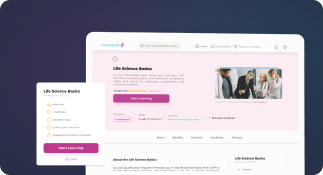Lean Six Sigma White Belt Certification
Definition
The Lean Six Sigma White Belt Certification is an entry-level credential that introduces individuals to the foundational principles of Lean and Six Sigma methodologies. It is designed for professionals looking to understand the basics of process improvement, waste reduction, and quality control, particularly in regulated industries such as pharmaceuticals, life sciences, and biotechnology.
White Belt training typically covers key concepts such as the DMAIC (Define, Measure, Analyze, Improve, Control) framework, Lean principles, and the roles of various Six Sigma belts in process optimization efforts.
Detailed Explanation
Purpose and Importance
The Lean Six Sigma White Belt Certification serves as the foundational step in the Lean Six Sigma hierarchy. While it does not involve leading projects or performing advanced data analysis, it empowers professionals with a broad understanding of process improvement tools and terminology. This is particularly important in the pharmaceutical and life sciences industries, where compliance with Good Manufacturing Practice (GMP), FDA regulations, and continual quality improvement are critical.
Applications in the Pharmaceutical and Life Sciences Industries
In highly regulated environments like pharmaceuticals, Lean Six Sigma White Belt certified employees can contribute to:
- Identifying non-value-added activities in manufacturing and laboratory workflows
- Supporting compliance initiatives by understanding process variability
- Enhancing cross-functional collaboration during audits and inspections
- Participating in quality improvement initiatives led by Green or Black Belts
Training Content and Structure
A typical Lean Six Sigma White Belt training program includes:
- Introduction to Lean and Six Sigma principles
- Overview of the DMAIC methodology
- Understanding waste (Muda) and process inefficiencies
- Basic tools such as SIPOC diagrams, process maps, and cause-and-effect analysis
- Roles and responsibilities within a Six Sigma project team
Training is often delivered online or in-person and may be completed in a few hours to a day, followed by a short assessment to earn certification.
Benefits of Lean Six Sigma White Belt Certification
For professionals in the pharmaceutical and life sciences sectors, earning a Lean Six Sigma White Belt cert provides numerous benefits:
- Enhanced understanding of quality and compliance frameworks
- Improved communication with cross-functional teams during audits and CAPA (Corrective and Preventive Action) implementations
- Career advancement by demonstrating a commitment to continuous improvement
- Foundation for pursuing advanced certifications (Yellow, Green, Black Belt)
Real-World Example
Consider a pharmaceutical packaging line experiencing frequent downtime. A White Belt-certified employee may not lead the improvement project but can contribute by identifying visible inefficiencies, documenting issues, and supporting data collection. Their knowledge of Lean principles enables more effective collaboration with Green Belt leads and quality assurance teams.
Related Certifications
- Lean Six Sigma Yellow Belt: Basic project participation and data collection
- Lean Six Sigma Green Belt: Project leadership and data analysis
- Lean Six Sigma Black Belt: Advanced project leadership and statistical analysis


